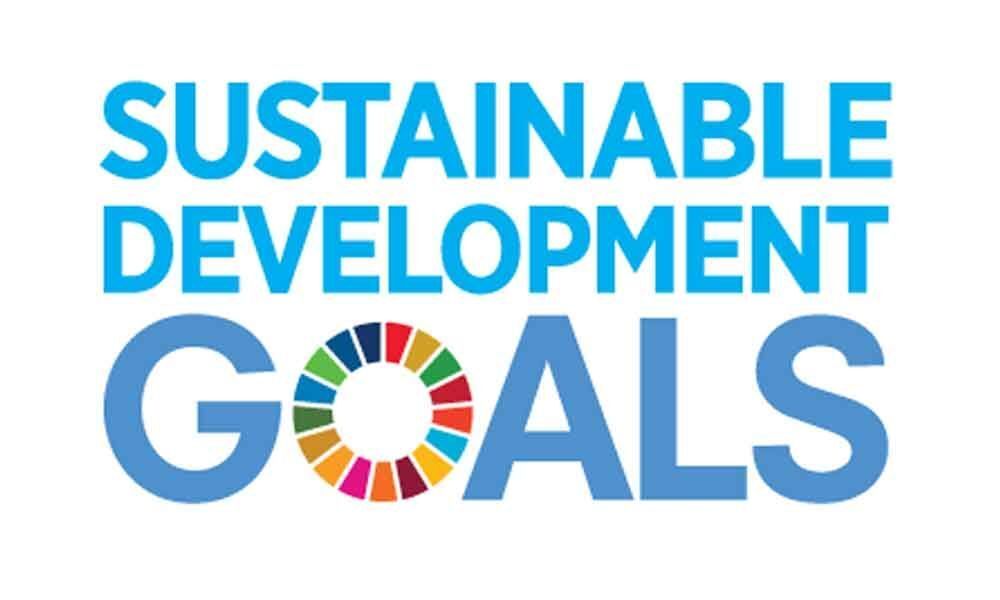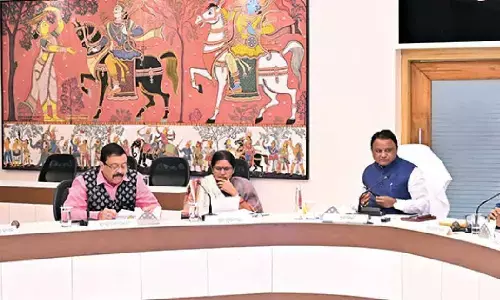India finding funds crunch to achieve SDGs

India is firmly anchored to maintain economic growth by introducing and implementing various policies and measures relating to sustainable development, climate change, resource efficiency and air pollution and investing in human capital and inclusive growth to achieve Sustainable Development Goals
India is firmly anchored to maintain economic growth by introducing and implementing various policies and measures relating to sustainable development, climate change, resource efficiency and air pollution and investing in human capital and inclusive growth to achieve Sustainable Development Goals (SDGs).
The SDGs are a collection of 17 global goals and 169 targets set to be achieved by 2030, aimed at addressing global challenges and calls for a global partnership to ensure peace and prosperity for people and the planet, now and into the future," according to the Economic Survey 2019.
One of the SDG is goal is ending poverty by 2030, this could be achieved by devising strategies that improve health and education, reduce inequality and spur economic growth in a sustainable manner and building of strong social infrastructure is key to achieve SDGs by 2030, it said.
The report also stated that Government is focusing on the provisioning of assets such as schools, institutes of higher learning, hospitals, access to sanitation, water supply, road connectivity, affordable housing, skills and livelihood opportunities to improve the social infrastructure and achieving these goals.
Today, India is having youngest demographic dividend as half of population is below the age of 25 years and available for five decades starting from 2005-06 to 2055-56, longer than any other country in the world and this young dividend can be reaped only if education, skilling and employment opportunities are provided to the young population.
Goal SDG-5 will be 'gender equality', achieving this goal the government has initiated several programmes including Beti Bachao, Beti Padhao to mainstream women and make them active agents of change in the society.
The report outlined that Namami Gange Mission is seen to play a critical role in ensuring that SDG 6 dealing with sustainable water management is met and out of the 150 planned Sewerage projects needed to be completed by 2035, 43 have been finished as of May 2019.
The report has emphasis on tackling resources wastages through recycling and other processing. However, India still lags behind on the global stage; total material demand is expected to double by 2030 so the country will need to have a harmonized policy at the national level to encourage resource efficiency. Currently, a majority of waste reuse is being managed by the organized sector.
The report notes that women are playing significant role in the Agriculture sector, especially among small and marginal farmers. Operational land holdings cultivated by women have increased to 13.9 per cent. A major problem in the sector, dominated by small and marginal farmers, is the lack of better water management.
Therefore, Improving Irrigation Water Productivity (IWP) in Agriculture is the need of the hour to encouraging farmers to adopt micro-irrigation systems. This can be done in various ways, including by way of subsidizing their purchase. Even as Agriculture has declined as a share of Gross Value Added to only 14.4 per cent, resource efficiency in the sector is crucial to meet the country's need for food self-sufficiency.
The Economic Survey 2019 has pointed out that finding required financial resources for meeting Nationally Determined Contributions (NDCs) under India's climate action is going to be a 'daunting challenge'.
The report also pointed out that finding required financial resources, especially from the private sector are going to be a daunting challenge, it means that resources would have to be mobilized from a variety of sources, in particular, private sector, apart from domestic public budgets and international public finance.
The preliminary estimate for meeting India's climate change actions between 2019 and 2030 would need around US$2.5 trillion (at 2014-15 prices) and the country would also need US$ 206 billon (at 2014-15 prices) between now and 2030 for implementing adaptation actions in key areas like agriculture, forestry, fisheries infrastructure, water resources and ecosystems.
Paris Agreement also emphasizes the role of climate finance in strengthening the global response to climate change. Though the international community witnessed various claims by developed countries about climate finance flows, but the actual amount of flows is far from these claims. In fact, without sufficient climate finance, the proposed NDCs would not fructify, the report says.
India would endeavor to do the best possible within their own domestic resources, keeping in mind the sustainable development imperatives. It is time for the global community to exhibit the requisite momentum to act upon their responsibilities on establishing the enabling environment for sustainable development and climate actions, it said.







